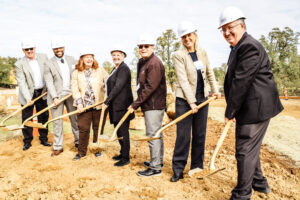COVID-19 has not only impacted the wellbeing and safety of residents, but has directly affected construction and housing development. The availability and pricing of construction materials and supplies have escalated. Virus outbreaks, lockdowns and labor shortages have inhibited the manufacturing and transportation of supplies. As homeowners have spent more time at home, home improvement projects and an increased demand for residential construction has further led to a supply chain squeeze and increased costs.
 With the shifting economy, recent housing trends are leaning more toward multi-family housing and dwelling units in urban areas. Most of these new developments are not deemed “affordable.” Priced out of the market, many individuals are fleeing urban areas in search of more reasonable accommodations. Some populous states, such as California, are seeing a rare drop in population for the first time in many years.
With the shifting economy, recent housing trends are leaning more toward multi-family housing and dwelling units in urban areas. Most of these new developments are not deemed “affordable.” Priced out of the market, many individuals are fleeing urban areas in search of more reasonable accommodations. Some populous states, such as California, are seeing a rare drop in population for the first time in many years.
A major cost factor is the high price tag associated with available land, especially in states such as California. Of the top 15 most physically-constrained metro areas in the country, seven are located in California, making housing construction that much more difficult.
While demand for construction projects are at an all-time high, many firms are having difficulty locating skilled workers, with no relief in sight. An estimated 80 percent of U.S. construction firms are unable to find enough qualified workers to meet the demand. More state and federal funding is needed to help fill the gap, as well as training and apprentice programs for cement masons, ironworkers, laborers, operating engineers, pile drivers, painters, transportation workers and the like.
The rising cost of supplies also have put constraints on the marketplace. Everything from lumber, steel, asphalt, cement to copper and insulation have soared in price. At the start of the pandemic, many companies anticipated a drop in construction when in fact the opposite panned out to be true. Home building and renovation are among the leaders in the post-pandemic economy and demand has actually increased as people have fled cities and moved to suburbs and less crowded spaces.
In addition to the high cost of commodities, the supply demand chain has significantly impacted the movement of cargo across the country. Extended delays at American seaports, such as Los Angeles and Long Beach, have led to logjams in the transportation of supplies. As construction projects increase, the need for materials and supplies also have increased, creating a surge in demand. Impacts on the supply chain are not only creating obstacles to efficiency and on-time delivery but also the need to evaluate the effect on escalating costs.
Many in housing development are having to reimagine ways to build resilience into construction timelines and to minimize costly delays. There is an opportunity to stay in front of these potential disruptions and to reevaluate business operations taking into account lessons learned from the pandemic.
“The need for affordable housing remains one of the most critical issues facing our society today,” shares CCH President and CEO Syd Najeeb. “It is imperative to balance high supply costs with material delays and the need for a qualified workforce to meet housing demands today and well into the future,” he says.



